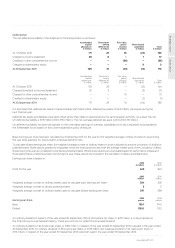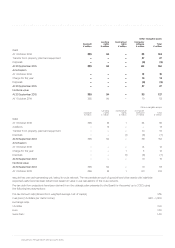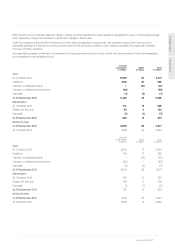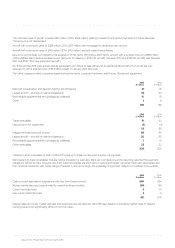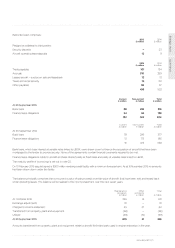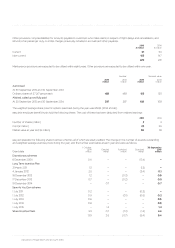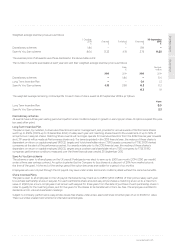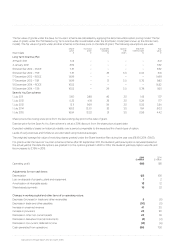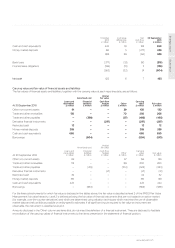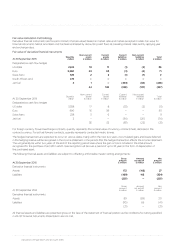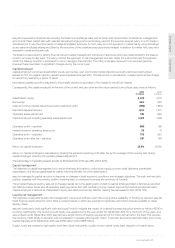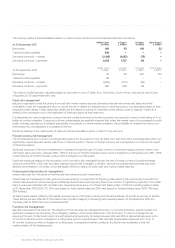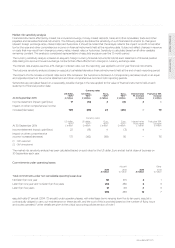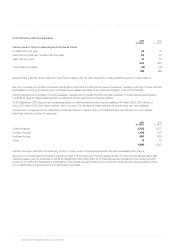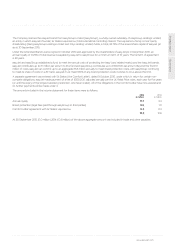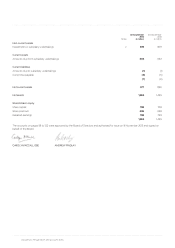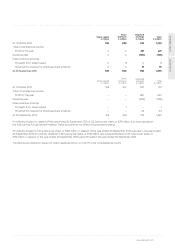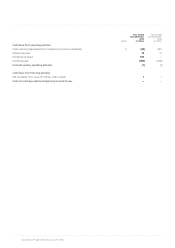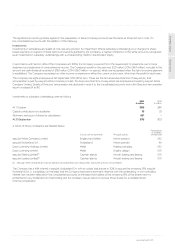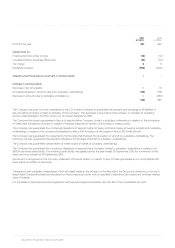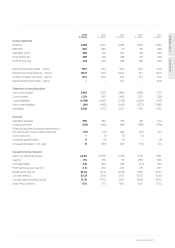EasyJet 2015 Annual Report Download - page 117
Download and view the complete annual report
Please find page 117 of the 2015 EasyJet annual report below. You can navigate through the pages in the report by either clicking on the pages listed below, or by using the keyword search tool below to find specific information within the annual report.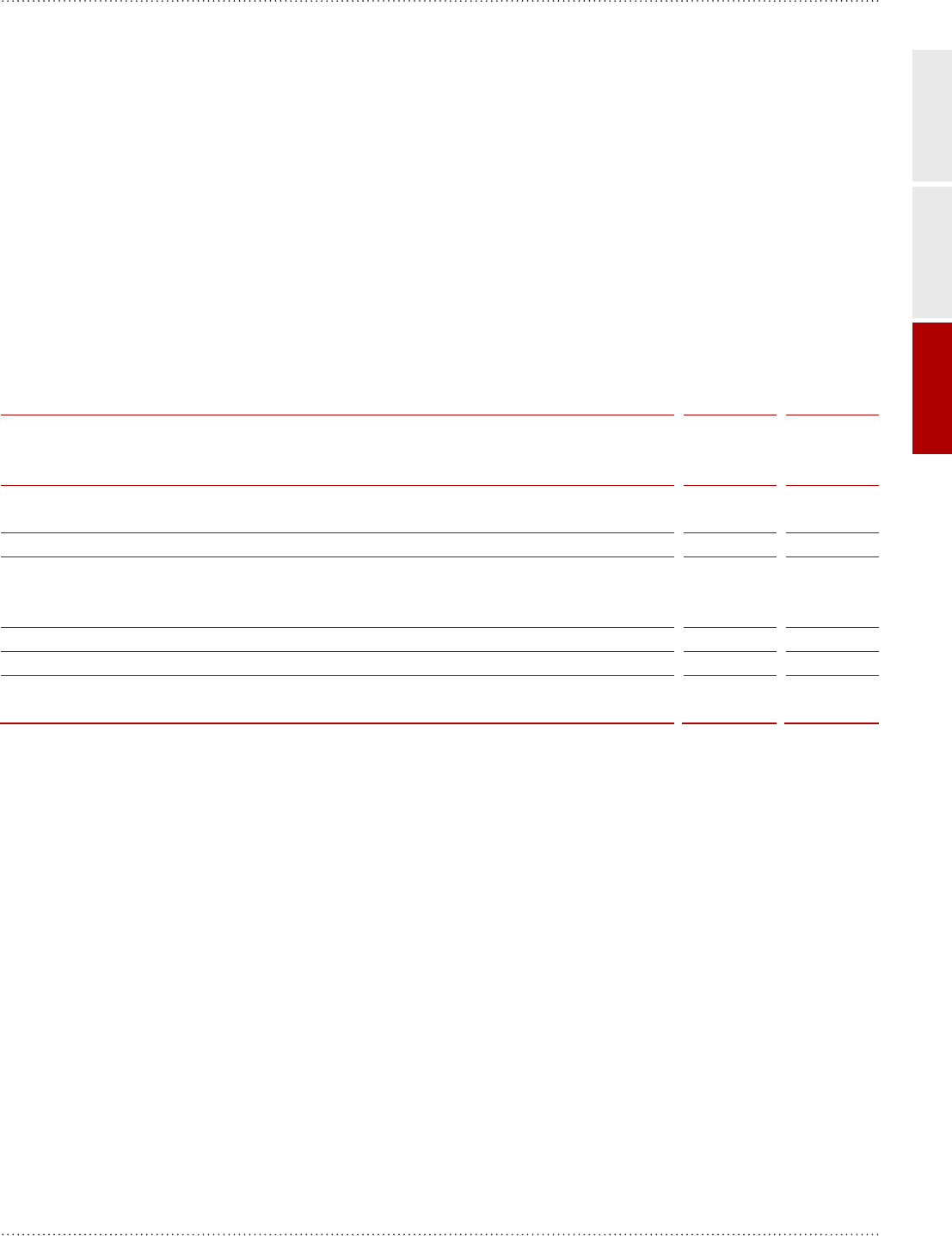
Strategic report Governance Accounts
113
www.easyJet.com
22. Financial risk and capital management
easyJet is exposed to financial risks including fluctuations in exchange rates, jet fuel prices and interest rates. Financial risk management
aims to limit these market risks with selected derivative hedging instruments being used for this purpose. easyJet policy is not to trade in
derivatives but to use the instruments to hedge anticipated exposure. As such, easyJet is not exposed to market risk by using derivatives
as any gains and losses arising are offset by the outcome of the underlying exposure being hedged. In addition to market risks, easyJet is
exposed to credit and liquidity risk.
The Board is responsible for setting financial risk and capital management policies and objectives which are implemented by the treasury
function on a day-to-day basis. The policy outlines the approach to risk management and also states the instruments and time periods
which the treasury function is authorised to use in managing financial risks. The policy is regularly reviewed to ensure best practice,
however there have been no significant changes during the current year.
Capital employed
Capital employed comprises shareholders’ equity, borrowings, cash and money market deposits (excluding restricted cash) and an
adjustment for the capital implicit in aircraft operating lease arrangements. The adjustment is calculated by multiplying the annual charge
for aircraft dry leasing by a factor of seven.
Normalised operating profit is adjusted for the implied interest incorporated in the charge for aircraft dry leasing.
Consequently, the capital employed at the end of the current and prior year and the return earned during those years were as follows:
2015
£ million 2014
£ million
Shareholders’ equity 2,249 2,172
Borrowings 504 563
Cash and money market deposits (excluding restricted cash) (939) (985)
Reported capital employed 1,814 1,750
Operating leases adjustment 798 868
Capital employed including operating leases adjustment 2,612 2,618
Operating profit – reported 688 581
Implied interest in operating lease costs 38 41
Operating profit – adjusted 726 622
Operating profit after tax – adjusted 581 491
Return on capital employed 22.2% 20.5%
Return on capital employed is calculated by dividing the adjusted operating profit after tax by the average of the opening and closing
capital employed, including the operating leases adjustment.
The percentage of operating leased aircraft at 30 September 2015 was 28% (2014: 32%).
Capital management
The objective of capital management is to ensure that easyJet is able to continue as a going concern whilst delivering shareholder
expectations of a strong capital base as well as returning benefits for other stakeholders.
easyJet manages its capital structure in response to changes in both economic conditions and strategic objectives. The cash and net debt
position, together with the maturity profile of existing debt, is monitored to ensure the continuity of funding.
The principal measure used by easyJet to manage capital risk is the gearing ratio of debt to capital employed. Debt is defined as reported
net debt plus seven times aircraft operating lease payments, less cash (including money market deposits but excluding restricted cash).
Capital employed is defined as shareholders’ equity plus debt as previously defined. Gearing has decreased to 14% (2014: 17%).
Liquidity risk management
The objective of easyJet’s liquidity risk management is to ensure sufficient cash resources and the availability of funding as required. easyJet
holds financial assets either for which there is a liquid market or which are expected to generate cash inflows that are available to meet
liquidity needs.
easyJet continues to hold significant cash and liquid funds to mitigate the impact of potential business disruption events as well as a $500m
revolving credit facility. The revolving credit facility was agreed during the year ended 30 September 2015, for a minimum of five years, and
was undrawn at 30 September 2015. easyJet has a target minimum liquidity requirement of £4 million per aircraft in the fleet. This requires
the revolving credit facility to be taken into consideration in assessing this liquidity metric. Total cash (excluding restricted cash) and money
market deposits at 30 September 2015 was £939 million (2014: £985 million).
Surplus funds are invested in high quality short-term liquid instruments, usually money market funds, bank deposits or tri-party repos.


